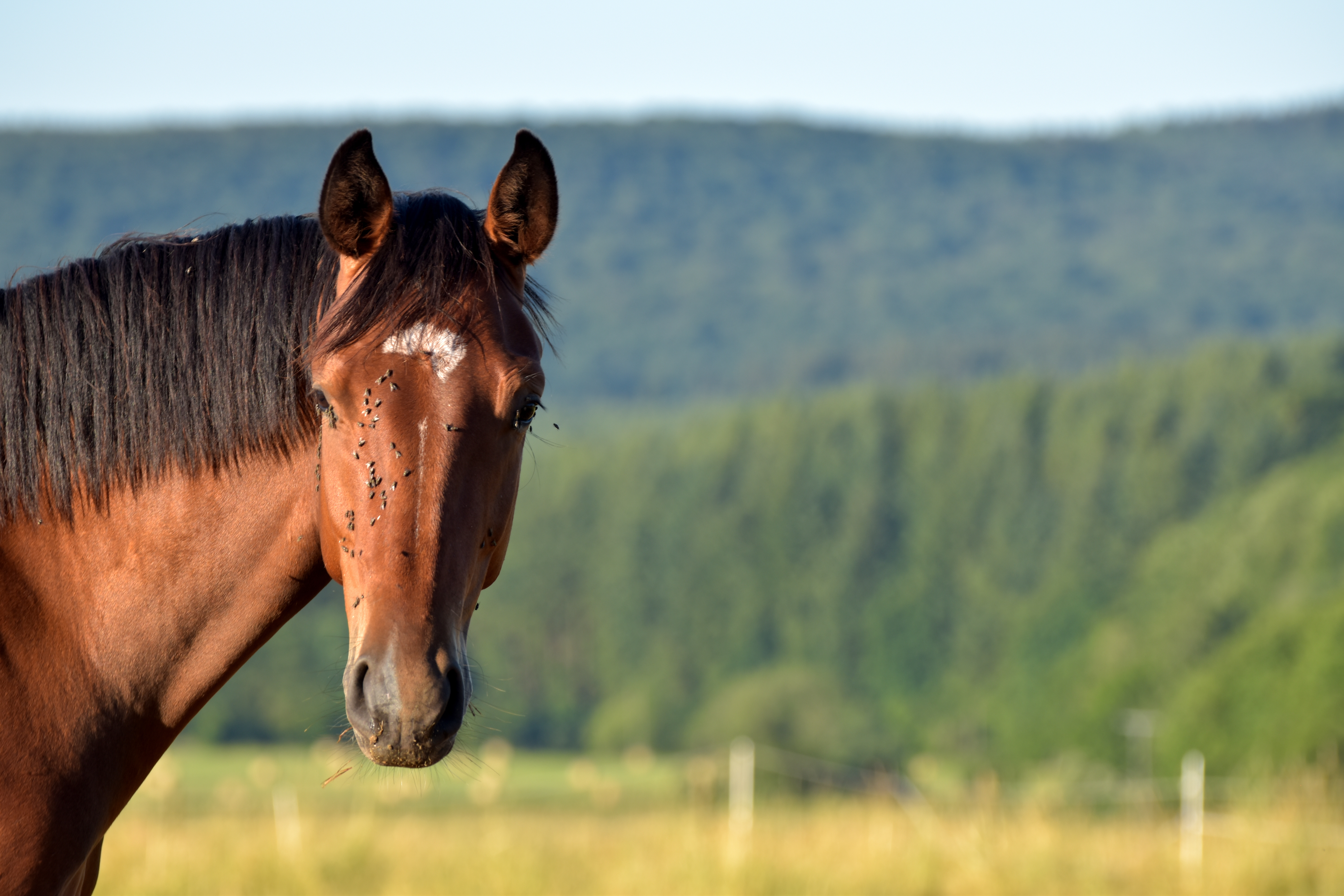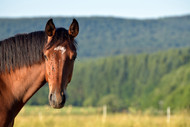Cutaneous Habronemiasis or ‘Summer Sores’
Posted by Dr Lucy Cudmore on 19th Jan 2024
Cutaneous Habronemiasis or ‘Summer Sores’ are currently prevalent in our horse population due to the recent rain and the humid conditions of Summer and Autumn.
These lesions develop in wounds or moist areas, including the eyes, penis and sheath. The Habronema worm larvae is transported and deposited in these areas by house and stable flies. As adult Habronema worms survive in nodules within the horse’s stomach and eggs are passed in the manure; the horse itself is a source of re-infection and spread of Habronema larvae. Following introduction, the Habronema larvae migrate into the tissue and form hard, raised discoloured (brown red) nodules. The lesions will enlarge in time as soft tissue irritation and inflammation results. These lesions become irritable and painful, with the horse often rubbing or biting the area. Secondary trauma may then occur; eye ulcerations, difficult urinating, swollen sheaths, discharging and ulcerated wounds. As these wounds typically attract more flies the cycle of larvae deposition continues, and lesions continue to grow in size.

Treatment
Treatment of the Habronema lesions involves topical and systemic therapies. As the Habronema larvae are found in the wounds and the adult worms are in the horse’s stomach, treatment with anthelmintic agents is recommended. Agents containing Ivermectin are often most effective.
Please consult your veterinarian for advice as in some instances anthelmintic resistance does occur. Systemic and topical anti-inflammatory agents are also required to reduce the irritation and inflammation associated with the lesions (for example phenylbutazone, corticosteroids). Surgical removal and debridement of the lesions may also be required if large and more chronic wounds are present. Intra-lesional injections can also be beneficial in reducing inflammation and destroying the larvae. Your veterinarian can assist in providing the most appropriate advice for the lesion type; depending on its location and severity.
Control of flies in the environment is essential;
- Keeping wounds clean and dry (applying bandages if necessary)
- Septicide® antiseptic cream or Cetrigen® spray will assist in repelling flies from healing wounds
- Environmental hygiene (removing moist feeding, ensuring the environment is clean) will assist in reducing fly breeding, with the assistance of insect repellents
- Fly veils and rugs may also reduce exposure and access of flies to wounds and/or moistened areas

